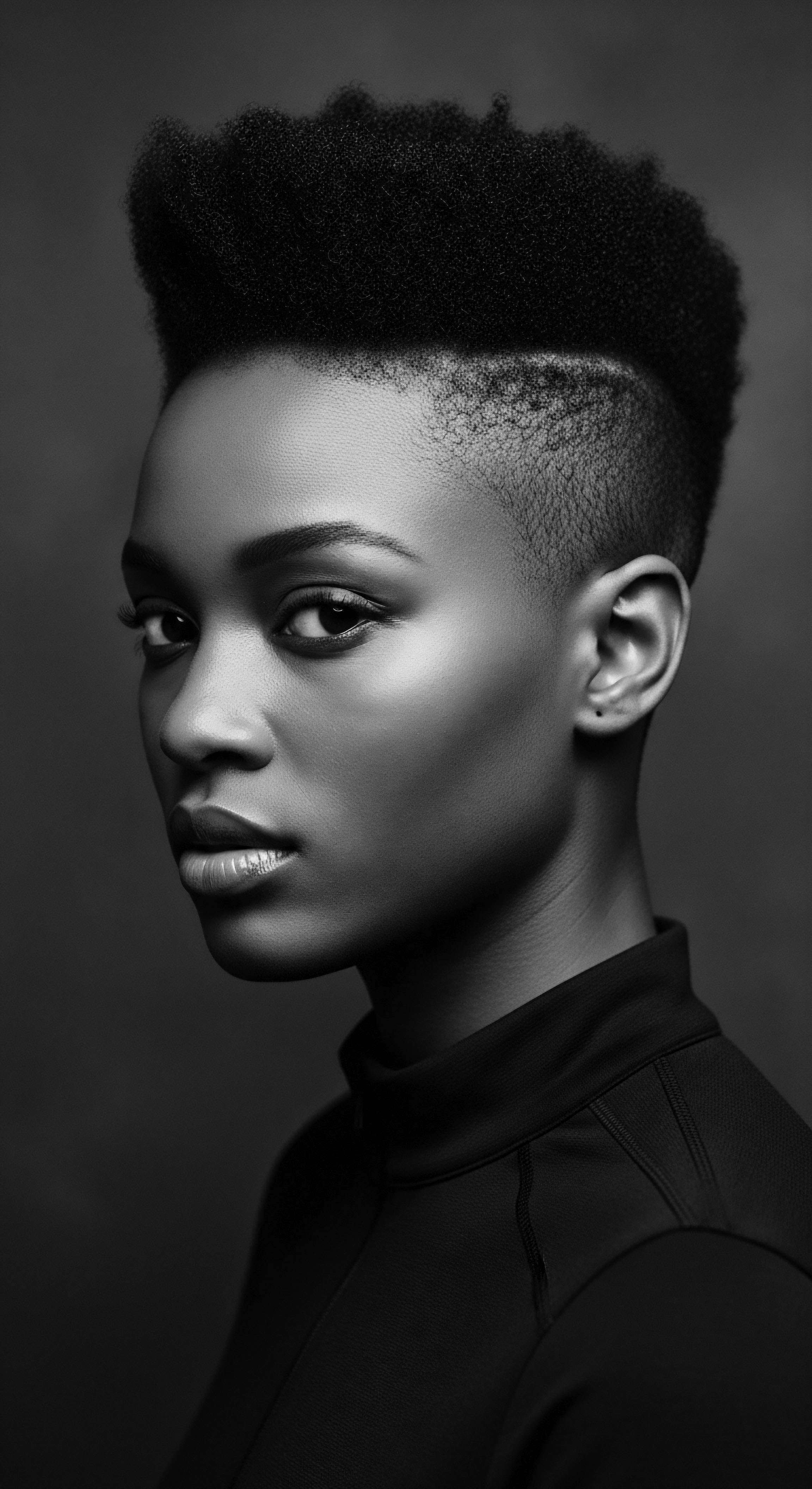
Roots
To truly grasp how the beautiful, varied crown of textured hair transformed into a powerful emblem of defiance and shared purpose during humanity’s most arduous epochs, one must first journey to the very genesis of its being. It begins not with an argument or a movement, but with the spiraling helix, the intricate patterns sculpted by ancestral hands, and the profound connection to the earth from which all life springs. This exploration, a meditation on the soul of a strand, asks us to witness textured hair not as a mere biological phenomenon, but as a living archive, a scroll upon which generations have inscribed their stories of survival, artistry, and spirit.
The earliest whispers of this heritage speak of hair as a potent communicator. Before the written word, before the carved stone, the styles worn on the head conveyed tales of lineage, marital status, age, wealth, and spiritual devotion. Across the vast, diverse continent of Africa, hair was meticulously tended, adorned with cowrie shells, beads, and precious metals, each element a dialect in a language understood by all. These were not simply aesthetic choices; they were declarations of identity, deeply woven into the fabric of daily existence and ceremonial life.
The very act of caring for hair became a communal ritual, a moment of intimate connection where wisdom passed from elder to youth, hands braiding not only strands, but also knowledge and belonging. This ancestral practice established hair as a sacred extension of self, a visible link to ancestry and community spirit. It was, and remains, a testament to inherent dignity, a physical representation of an individual’s place within the collective cosmos.

Unraveling Hair’s Ancient Architecture
The foundational understanding of textured hair begins at its very core, with its unique anatomical distinctions. Unlike straighter hair types, textured strands typically emerge from elliptical or oval-shaped follicles, guiding the hair shaft to coil and curl as it grows. The more pronounced the ellipse, the tighter the curl pattern tends to be. This structural design lends textured hair its incredible versatility and resilience, allowing it to hold intricate styles that defy gravity and conventional norms.
Moreover, the distribution of disulfide bonds within the keratin proteins, unevenly spread in textured hair, contributes to its signature bends and curves. This elemental biology, a design of remarkable natural engineering, set the stage for its later symbolic weight. It existed long before any human decree, a natural wonder of the African continent.
Textured hair, in its very biological structure, holds the blueprint of its ancient heritage, a testament to its inherent strength and unique design.
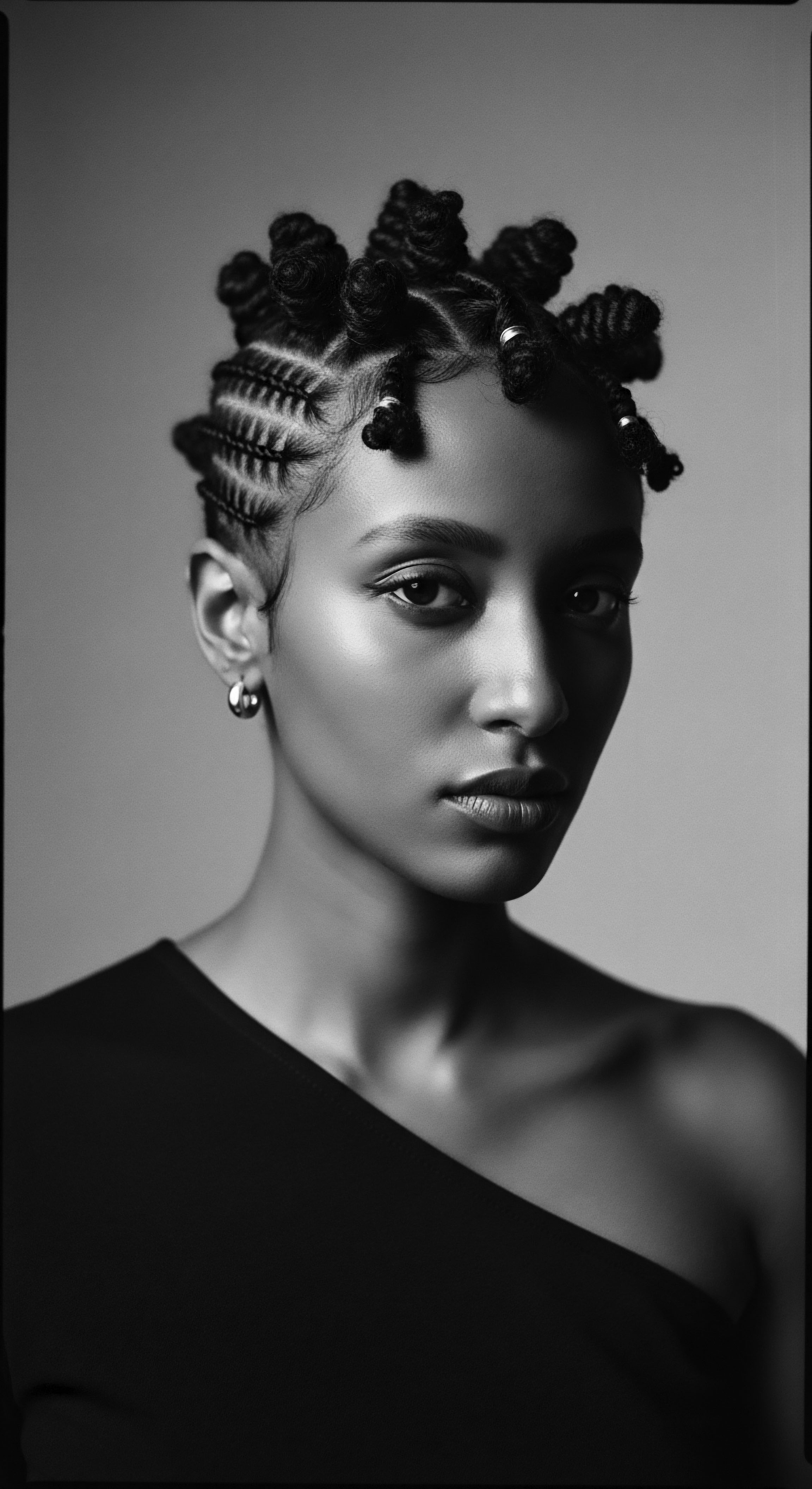
African Hair Systems and Shared Knowledge
Traditional African societies cultivated sophisticated hair care systems, their wisdom passed orally through generations. These systems recognized the diversity of hair types within communities, developing tailored approaches using locally available resources. The classifications were organic, rooted in observation and functionality, often linked to spiritual beliefs or social roles.
- Shea Butter ❉ From the karité tree, prized across West Africa for its moisturizing and protective qualities, often blended with other oils for hair and skin.
- Chebe Powder ❉ Utilized by Chadian women, a blend of herbs that strengthens hair, preventing breakage and aiding length retention, a practice tied to specific ethnic groups.
- Aloe Vera ❉ Used for centuries across various African regions for its soothing and conditioning properties, offering hydration and promoting scalp health.
- Black Soap ❉ An ancient cleansing agent, especially from West Africa, known for its gentle yet effective purification, often incorporating plantain peels and cocoa pods.
These natural elements were not merely ingredients; they were gifts from the land, imbued with ancestral knowledge. The tools were simple yet ingenious ❉ combs carved from wood or bone, their teeth designed to navigate coils, and natural fibers used for extensions or adornment. This foundational codex of care represented a symbiotic relationship with nature and a deep respect for the hair’s inherent qualities, reflecting an understanding that transcended mere aesthetics to touch upon holistic wellbeing. The nomenclature, specific to regional dialects, held meanings that spoke of the hair’s texture, its growth patterns, and its cultural purpose, a precise language for a deeply understood aspect of being.

Ritual
The path from elemental biology to potent cultural symbol is paved with ritual, with hands tending, shaping, and transforming hair into expressions of identity, resistance, and shared purpose. When challenging times descended upon communities of African descent, particularly through the brutal forced migration of the transatlantic slave trade, the ancient traditions of hair care did not vanish. They adapted, they whispered in hushed tones, and they became clandestine acts of continuity and defiance. The art and science of textured hair styling, once open declarations of status and belonging, became covert operations, preserving a vital piece of the self that enslavers sought to extinguish.
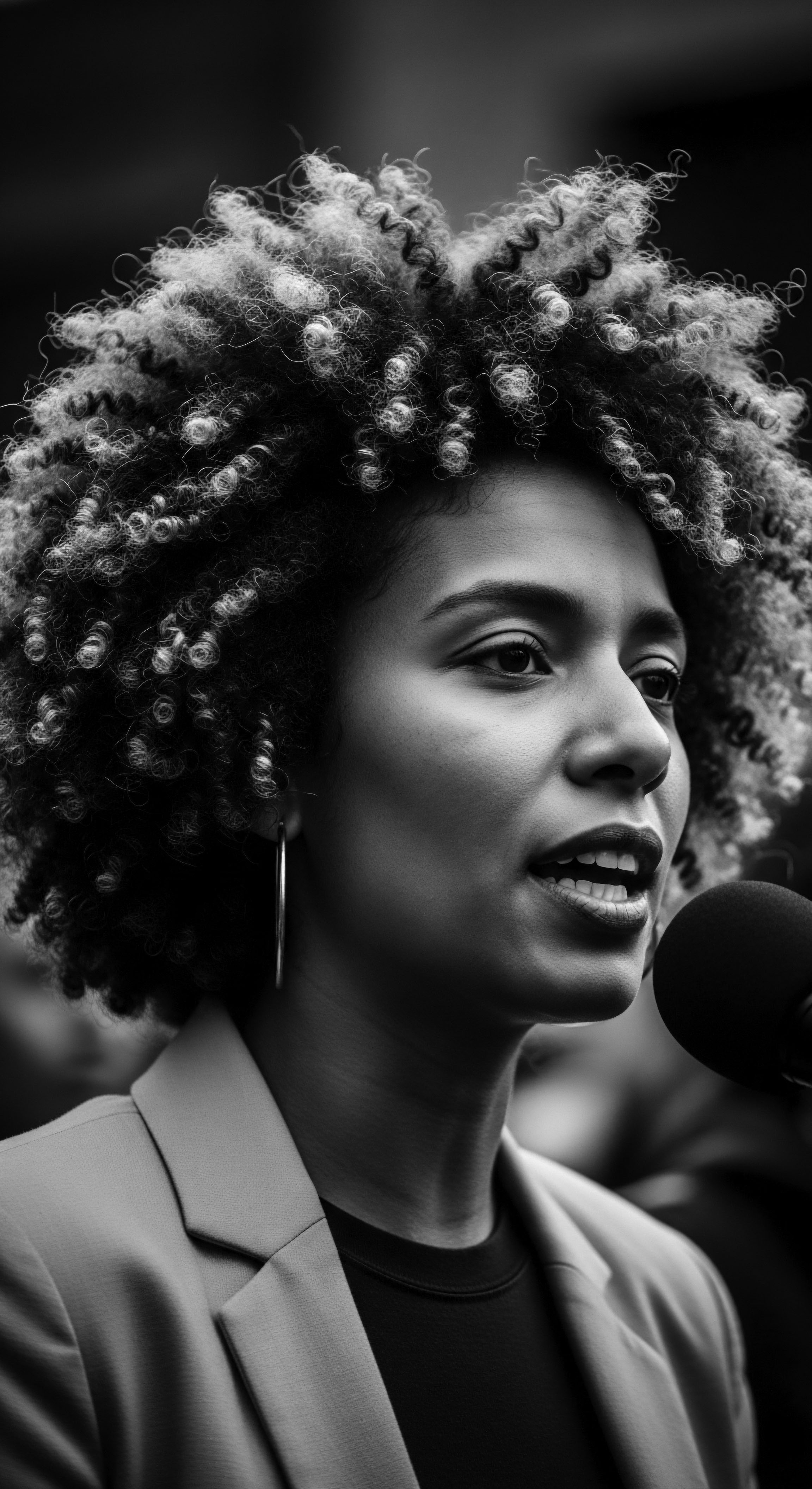
Styling as Sustained Memory
For individuals stolen from their homelands, stripped of their names and dignity, hair became a silent, yet powerful, canvas for memory. Enslaved women, despite being denied access to traditional tools and ingredients, found ways to maintain ancestral styles. Rice seeds, for instance, were braided into hair as a means of survival, a hidden provision for uncertain futures (BLAM UK CIC, 2022). Cornrows, a style with roots stretching back millennia in various African cultures, served a dual purpose ❉ a link to home and, astonishingly, as covert maps to freedom, their intricate patterns depicting escape routes (BLAM UK CIC, 2022; Dabiri, 2020).
This act of styling was not a trivial vanity; it was a deeply subversive practice, a reclamation of personhood and a strategic maneuver for liberation. Each part, each plait, carried a fragment of collective memory, a whispered promise of return to self, even in the most inhumane circumstances.
In the aftermath of slavery, and through eras of segregation and systemic oppression, hair continued to be a contested terrain. Eurocentric beauty standards were aggressively imposed, portraying textured hair in its natural state as “unprofessional” or “untamed” (JSTOR Daily, 2019). The hot comb and chemical relaxer became symbols of assimilation, a perceived ticket to social acceptance, despite the physical harm they inflicted upon the hair and scalp. Yet, even within this conformity, innovation persisted.
Black stylists and entrepreneurs, like Madam C.J. Walker, developed products, albeit often for straightening, that also provided agency and economic opportunity within their communities (ADJOAA, 2024). This period reflects a complex interplay of adaptation and resistance, where the pursuit of straight hair, for many, also represented a form of survival within a hostile society, while for others, it became a point of contention and internalized struggle.

What Does the Afro Express in Challenging Times?
The mid-20th century marked a profound shift. The burgeoning Civil Rights Movement and the rise of Black Power ideology sparked a radical re-evaluation of Black identity, coining the powerful affirmation ❉ “Black is Beautiful.” At the vanguard of this cultural revolution stood the Afro. This style, an unrestrained celebration of natural texture, became more than a fashion statement; it was a visible manifesto. It directly challenged the prevailing beauty norms that had long denigrated Black features, asserting an unapologetic pride in African heritage (JSTOR Daily, 2019).
Wearing an Afro was an overt act of defiance, a public declaration of self-love and solidarity within the Black community (Patton, 2019). It symbolized a collective awakening, a rejection of centuries of imposed inferiority, transforming what was once deemed “bad” hair into a symbol of collective power and beauty (Johnson & Bankhead, 2014). This embrace of natural hair was a powerful means of identifying with and supporting the movement for racial equality, embodying a profound commitment to self-determination and cultural autonomy.
The Afro, a voluminous crown of natural coils, became a visual declaration of self-acceptance and a potent symbol of defiance during the Civil Rights and Black Power movements.

The Continuum of Resistance Hairstyles
Beyond the Afro, other natural styles continued to carry significant meaning. Locs, for instance, deeply connected to various African spiritual traditions and later to the Rastafari movement, served as another powerful symbol of anti-colonial and anti-Western consciousness (ADJOAA, 2024; The Halo Collective, 2024). Braids, twists, and cornrows, re-emerging with renewed pride, reaffirmed cultural links and became markers of collective identity.
The decision to wear natural hair, in any of its varied forms, became a conscious political act, a visible commitment to Black pride and the rejection of oppressive standards. This spectrum of styles solidified textured hair’s role as a non-verbal yet unequivocal form of communication during periods of intense social struggle.
| Hair Style Cornrows |
| Historical Context and Heritage Ancient African style, used during enslavement to carry rice seeds and serve as maps to freedom. Post-emancipation, a quiet assertion of cultural continuity. |
| Hair Style Afro |
| Historical Context and Heritage Prominent during the Civil Rights and Black Power movements (1960s-1970s) as a symbol of Black pride, self-love, and political defiance against Eurocentric beauty standards. |
| Hair Style Locs |
| Historical Context and Heritage Rooted in various African spiritual practices and later in the Rastafari movement, symbolizing spiritual connection, natural living, and anti-colonial resistance. |
| Hair Style These styles exemplify how textured hair has consistently served as a medium for expressing cultural heritage and unwavering identity through periods of oppression. |
The tools used for these heritage styles, too, bear their own stories. From the hands shaping coils with water and natural oils to the wide-tooth combs designed to preserve fragile curl patterns, each tool held significance. They were extensions of intention, facilitating practices that honored the hair’s natural inclinations and celebrated its inherent beauty. The very act of combing, sectioning, and styling became a communal effort in many instances, strengthening bonds and passing on skills, a tender thread connecting generations through shared care and ritual.
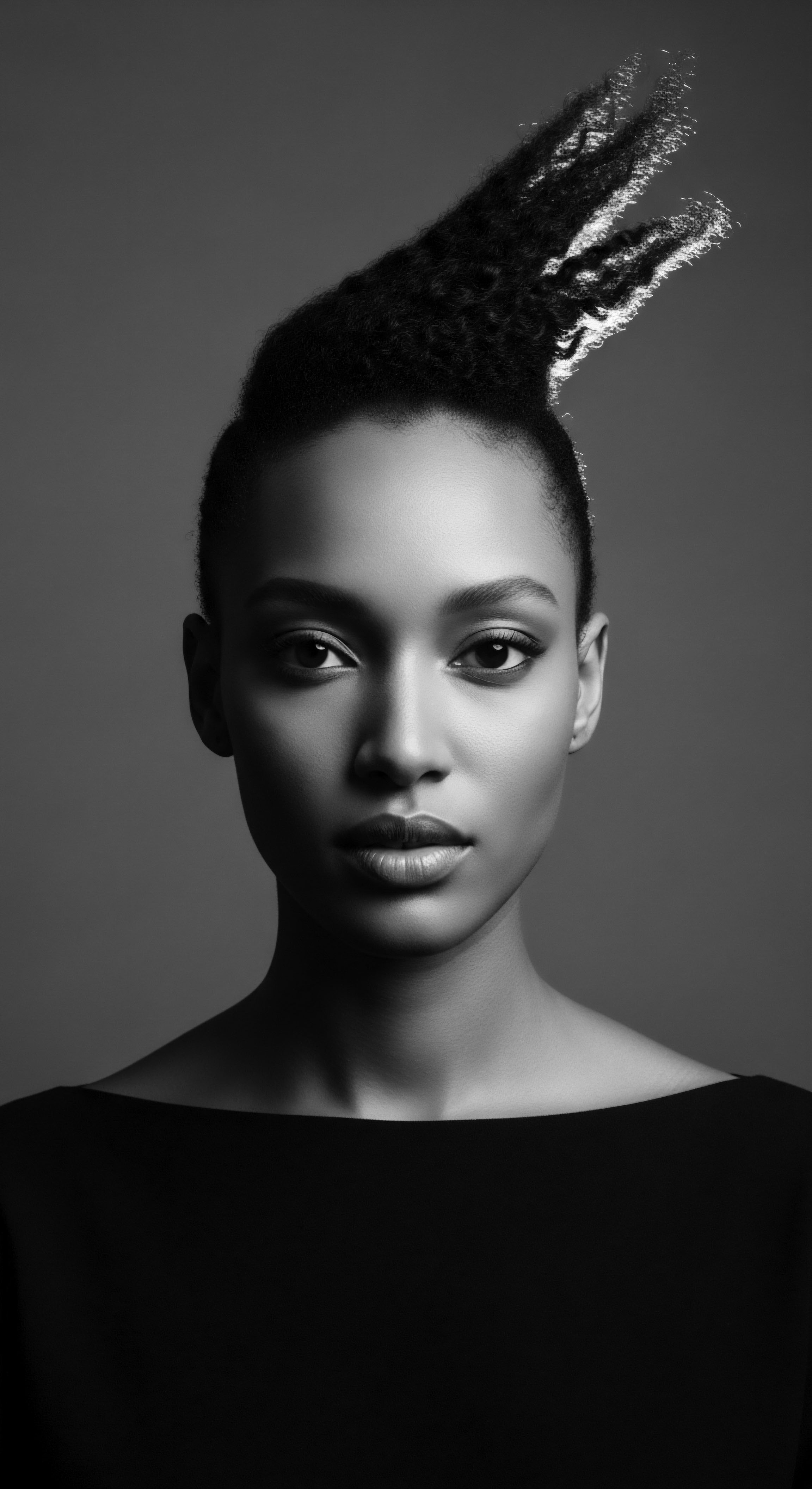
Relay
The story of textured hair as a symbol of defiance and collective identity is a living narrative, ceaselessly relayed from one generation to the next, adapting its form while holding fast to its ancestral core. This ongoing transmission of meaning speaks to the hair’s profound role as a conduit for memory, resilience, and the shaping of future identities. As we examine this relay, we connect the scientific understanding of textured hair with the ancient wisdom of its care, discerning how ancestral practices continue to inform holistic wellness and problem-solving in the contemporary moment.

How Does Textured Hair History Inform Identity?
The historical devaluation of textured hair, deeply rooted in the dehumanizing practices of the transatlantic slave trade and subsequent systemic racism, created a complex relationship with identity. For centuries, the natural state of Black hair was pathologized, labeled “unruly” or “unprofessional” (Dabiri, 2020). This linguistic violence mirrored the physical and psychological harm inflicted upon individuals who were coerced or pressured to alter their hair to conform to Eurocentric ideals.
The act of forcibly shaving heads during the slave trade was a deliberate strategy to strip individuals of their cultural identity, severing ties to ancestral customs where hair communicated social status and spiritual beliefs (ADJOAA, 2024; Library of Congress, n.d.). This erasure was a profound assault on selfhood, a direct attack on a visible marker of heritage.
Yet, in the face of such profound oppression, a tenacious spirit of resistance persisted. The reclamation of natural hair, prominently championed during the Civil Rights and Black Power movements, represented a powerful counter-narrative (The Halo Collective, 2024). It was a collective declaration that “Black is beautiful,” not despite, but because of its authentic forms. This era saw a deliberate shift in perception, transforming textured hair from a source of shame or burden into a source of pride and solidarity.
This societal transformation, as Johnson and Bankhead (2014) articulated, redefined what was considered “good” hair, asserting that the coils and kinks, twists and locs, were inherently good and beautiful. This shift was more than aesthetic; it was a profound act of self-definition, a communal embrace of a long-suppressed heritage.
The legacy of this struggle continues today. Discrimination based on hair texture and style persists in workplaces and schools globally (The Halo Collective, 2024; O’Brien-Richardson, 2019). The CROWN Act in the United States, for instance, legislation prohibiting hair discrimination, stands as a modern testament to the ongoing need to protect the right to wear natural hair without penalty (The Halo Collective, 2024).
This legal battle underscores the enduring connection between hair, identity, and the struggle for equity. The very existence of such legislation highlights that the defiance expressed through hair is not a relic of the past, but a living, ongoing assertion of freedom and selfhood, continually re-affirmed by individuals and communities.
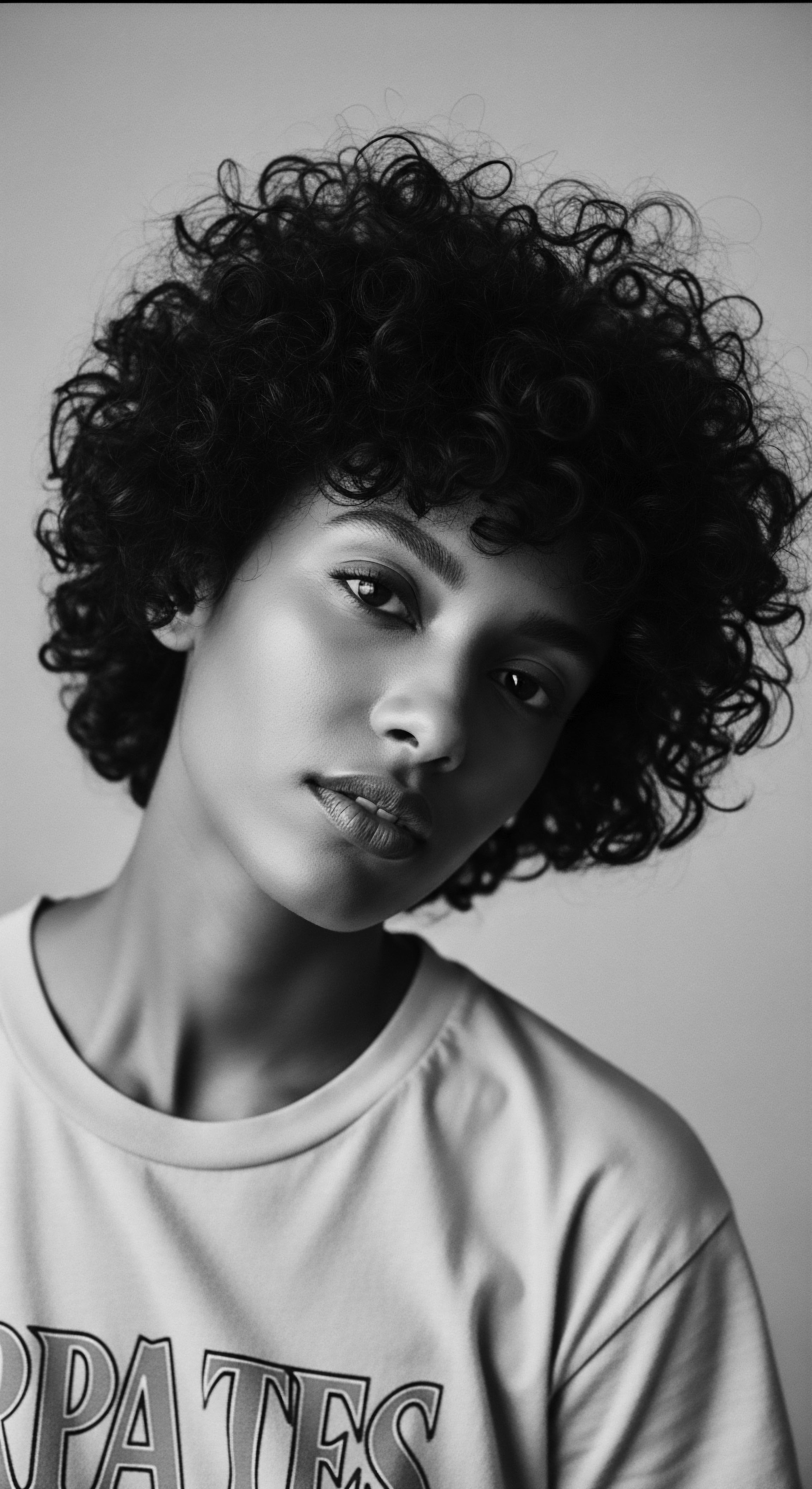
Ancestral Wisdom and Modern Wellness
The regimen of care for textured hair is itself a continuation of ancestral wisdom, adapting ancient practices to contemporary needs while retaining a core reverence for the hair’s natural state. Holistic approaches to hair wellness, deeply rooted in African traditions, recognize the interconnectedness of mind, body, and spirit. These practices prioritize gentle handling, natural ingredients, and protective styling. For example, the wisdom of night-time hair care, exemplified by the use of bonnets and silk scarves, echoes historical practices of safeguarding hair during sleep, ensuring its integrity and moisture retention over extended periods.
- Scalp Health ❉ Traditional practices emphasized maintaining a clean, nourished scalp as the foundation for healthy hair growth, often using herbal infusions and gentle massages.
- Moisture Retention ❉ Deep conditioning and oiling, using ingredients like coconut oil or shea butter, reflect ancestral methods for preventing dryness and breakage in naturally coily textures.
- Protective Styles ❉ Braids, twists, and cornrows, besides their symbolic meanings, served a practical purpose in ancient times by protecting hair from environmental damage and reducing manipulation, a practice still central to modern care.
The “problem-solving” for textured hair, from managing dryness to minimizing breakage, often finds its most effective solutions in methods that echo this heritage. Understanding the specific needs of textured hair – its tendency towards dryness due to the coiling pattern hindering natural oil distribution, or its fragility at the points of curl – allows for modern scientific insights to validate and refine traditional care rituals. This synthesis creates a regimen that is both scientifically informed and culturally resonant, enabling individuals to connect with their hair on a deeper level, as an extension of their lineage and a testament to their enduring spirit.
The continuum of textured hair care, from ancient remedies to modern legislation, reflects a persistent and powerful relay of cultural pride and the assertion of self.
The evolution of this defiance is evident in public spaces. In a 1972 study of Black teens living in St. Louis, Missouri, researchers found a significant correlation between positive self-esteem and the embrace of natural hairstyles, particularly the Afro (Patton, 2019). This empirical data reinforces the lived experience ❉ when individuals felt free to express their heritage through their hair, it fortified their sense of self-worth and belonging.
This was not merely a reaction to external pressures, but an internal cultivation of strength, mirrored outwardly by the burgeoning natural hair movement that gained ground in academic discourse and popular culture. The adoption of the Afro and other natural styles by public figures like Angela Davis, for instance, amplified this message, making visible the inherent beauty and political potency of textured hair as a weapon in the fight for racial equality and a public declaration of self-love (JSTOR Daily, 2019).

Reflection
The journey through the intricate world of textured hair, from its biological roots to its profound symbolic power, reveals a story of remarkable resilience and enduring spirit. It is a story not simply observed, but felt deeply within the ‘Soul of a Strand’ ethos, a philosophy that views each coil and wave as a repository of ancestral memory, a vibrant thread connecting past to present and future. Textured hair, in its myriad forms, has stood as an unwavering testament to collective identity, especially when humanity faced its darkest hours. It has been a silent language, a proud banner, a map to freedom, and a defiant crown.
This enduring heritage is not static; it is a living, breathing archive, continuously written by new generations who find solace, strength, and self-acceptance in their natural textures. The path from imposed conformity to celebrated authenticity has been long and arduous, marked by both sorrow and triumph. Yet, through every challenge, textured hair has emerged not only intact, but stronger, richer, and more profoundly meaningful. It speaks of a history that cannot be shorn, a spirit that cannot be tamed.
As we honor this legacy, we are reminded that care for textured hair extends beyond the physical; it is a spiritual practice, a cultural preservation, and a deeply personal affirmation of belonging to a lineage of courage and beauty. It stands as a beacon, perpetually reminding us that true identity, like textured hair, is magnificent in its natural form, unbound and gloriously free.

References
- Akanmori, Harriet. “Hairstyles, Traditional African.” In The SAGE Encyclopedia of African Cultural Heritage in North America, edited by Y. R. Davis and P. K. Adepeju, pp. 883-885. SAGE Publications, Inc. 2015.
- BLAM UK CIC. “The history of Black Hair.” BLAM UK CIC, 2022.
- Dabiri, Emma. Twisted ❉ The Tangled History of Black Hair. HarperCollins, 2020.
- Johnson, Charmaine and Tameka Bankhead. “The importance of hair in the identity of Black people.” Nouvelles pratiques sociales, vol. 33, no. 2, 2021, pp. 209-224.
- JSTOR Daily. “How Natural Black Hair at Work Became a Civil Rights Issue.” JSTOR Daily, 3 July 2019.
- Library of Congress. “Heavy is the Head ❉ Evolution of African Hair in America from the 17th c. to the 20th c.” Library of Congress, n.d.
- Patton, Tracey Owens. “Hey Girl, Am I More Than My Hair?” Communication and Critical/Cultural Studies, vol. 16, no. 1, 2019, pp. 1-17.
- The Halo Collective. “End Hair Discrimination.” The Halo Collective, 2024.
- Walker, Jessica M. “The Use of Fashion to Express Black Pride during the Civil Rights and Black Power Movement.” Master’s thesis, Bridgewater State University, 2007.
